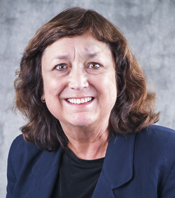Touch-screen diabetes education kiosk proves successful in low-income clinics

The touch-screen diabetes education kiosk (Diosk©), developed by faculty at the Texas A&M Health Science Center School of Public Health, has shown to be a potentially valuable tool for diabetes prevention and management. Additional strategies to improve the utilization of the Diosk is the subject of an article published in this month’s Diabetes Spectrum Journal.
Diosk developers Regents and Distinguished Professor Marcia Ory, Ph.D., M.P.H., and Jane Bolin, B.S.N., J.D., Ph.D., professor and interim department head of Health Policy and Management, examined the implementation process of the Diosk in a family medicine clinic. “The Implementation of a Diabetes Education Kiosk in a Low-Income Clinical Setting: A Community Implementation Process” provides the results of the three-month study.
“The Diosk is a form of interactive behavior change technology designed to encourage healthy behavior changes,” Ory said. “The Diosk is a bilingual, Spanish and English touch-screen computer education program that works by motivating patients to be more independent and improve their self-management on their own without consuming sparse time from health care providers.”

The study showed that overall, patients found the Diosk to be very effective at providing useful, easy to understand information on diabetes and step-by-step guidance on diet and exercise suggestions.
“The intent of this study was to focus on strategies for improving the implementation of interactive behavior change technology, which have shown promise in impacting behavioral change,” Bolin said.

Ory emphasizes “To enhance successful implementation of the Diosk in the future, it is important to clearly define the needs of the community, provide clinic-wide training to clinicians and staff, and designate an on-site advocate to promote the use of the Diosk to patients.”
Ory and Bolin conclude that with the use of the Diosk and other emerging technologies, clinicians can provide patients with necessary health resources and education without them incurring the extra cost of an appointment.
Co-author of the article is Araceli Lopez-Arenas, doctoral student at Texas A&M University and graduate of the Texas A&M School of Public Health.
Media contact: media@tamu.edu


